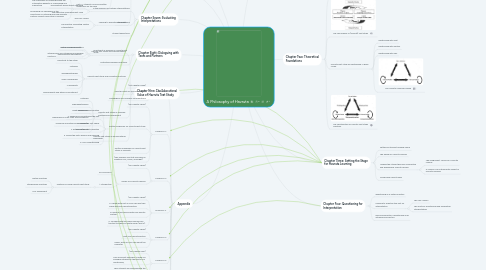
1. Chapter Five: Listening for Interpretation
1.1. Listening as an Interpretive Practice
1.2. Learning to Listen in Interpretation
1.2.1. Instructional Strategy
1.2.2. The Mini-Lesson
1.2.3. The Line-by-Line Havruta Learning
1.3. Insights from Students' Reflections
2. Chapter Six: Supporting and Challenging
2.1. Introduction
2.2. Why Supporting and Challenging?
2.3. The Lesson
2.3.1. Part I: Mini-lesson
2.3.2. Part II: Text Study in Havruta to Develop Textual Interpretations
2.3.3. Part III: Text Study in Havruta to PracticeSupporting and Challenging
2.3.4. Part IV: Students' Oral and Written Reflections on the Task
2.3.4.1. Moving Beyond Habit and Inclination
2.3.4.2. The Challenges of Challenging and the Interpretive Benefits of Challenging and Supporting
2.3.4.3. Developing An Awareness of the Importance of Listening and How Havruta Partners Impact Each Other's Learning
2.4. Conclusion
3. Chapter Seven: Evaluating Interpretations
3.1. In the Presence of Multiple Interpretations
3.1.1. The Relativist-Reductionist Approach
3.1.2. The Objective-Foundationalist View
3.2. Leaming to Evaluate Interpretations
3.2.1. The Mini-Lesson
3.2.2. The Practice: Evaluating Textual Interpretation
3.3. Student Reflections
4. Chapter Eight: Dialoguing with Texts and Partners
4.1. Enactment of Dialogue in Havruta Text Study
4.1.1. Textual Dialogical Practices
4.1.2. Interpersonal and Intrapersonal Dialogical Practices
4.2. Cultivating Dialogical Practices
5. Chapter Nine: The Educational Value of Havruta Text Study
5.1. Havruta Text Study and Transformaltion
5.1.1. Modes of Engagement
5.1.2. Transformative Perceptions
5.2. Havruta Text Study and Formative Practices
5.2.1. Sensitivity to the Other
5.2.2. Listening
5.2.3. Wholeheartedness
5.2.4. Open-mindedness
5.2.5. Vulnerability
5.2.6. Responsibility and Ethical Commitment
5.3. Havruta Text Study in Teachers' Professional Development
5.3.1. Listening
5.3.2. Wholeheartedness
5.3.3. Open-mindedness
5.3.4. Awareness of Ones' Own Preconceptions
5.3.5. Tolerance and Patience for Ambiguity
5.3.6. Accountability
5.4. Havruta Text Study as an Educational Philosophy
6. Appendix
6.1. APPENDIX 1
6.1.1. (Fot Chapter Three)
6.1.2. Selected Texts for Havruta Lessons:
6.1.3. Pedagogical and Scholarly Considerations
6.2. APPENDIX 2
6.2.1. (For Chapter Three)
6.2.2. Written Guidelines for Havruta Text Study
6.2.2.1. 1. Background information
6.2.2.2. 2. Reading and Questioning the Text
6.2.2.3. 3. Making the Text Speak
6.2.2.4. 4. Retrieving the Text's Question
6.2.2.5. 5. Giving the Text's Reason and Replying
6.2.2.6. 6. Self-understanding
6.2.3. Written Guidelines for Havruta Text Study-A Template
6.2.4. (This example uses text discussed in Chapters Four, Seven, and Eight)
6.3. APPENDIX 3
6.3.1. (For Chapter Three)
6.3.2. Myself as a Havruta Learner
6.3.2.1. ASSIGNMENT
6.3.2.2. 1. Introduction
6.3.2.2.1. Features of Good Havruta Text Study
6.4. APPENDIX 4
6.4.1. (For Chapter Three)
6.4.2. A. Please write first on your own and then share with your havruta partner:
6.4.3. B. Explore and discuss with your havruta partner:
6.4.4. C. Compare what you have learned from this text to what you wrote earlier (part A).
6.5. APPENDIX 5
6.5.1. (For Chapter Three)
6.5.2. Meet your havruta partner
6.5.3. Finally, write on your own about the following:
6.6. APPENDIX 6
6.6.1. (For Chapter Four)
6.6.2. This document describes a model for engaging students in the practice of questioning,
6.6.3. Then students are provided with the following guidelines:
6.7. APPENDIX 7
6.7.1. (For Chapter Five)
6.7.2. This text serves as background to the text in Appendix 8 (which is explored using the line-by-line method).
6.8. APPENDIX 8
6.8.1. (For Chapter Five)
6.9. APPENDIX 9
6.9.1. (For Chapter Six)
6.9.2. Study Guidelines
6.9.2.1. Part I
6.9.2.2. Part II
6.9.2.2.1. Your role as a presenter is to:
6.9.2.2.2. Your role as a critical colleague/havruta is to:
7. Chapter One: Contextual Foundations
7.1. Historical Roots
7.2. Contemporary Expressions
7.3. Researchers' Journeys
7.3.1. A Note About the Authors and Their Work
7.4. The Beit Midrash Research Project
7.4.1. a. The Setting
7.4.2. b. Research Context and Framework
7.4.3. c. Data Sources
7.4.4. d. Sources of Inspiration
8. Chapter Two: Theoretical Foundations
8.1. Philosophical hermeneutics and havruta text study
8.2. The Two Phases of (Havruta) Text Study
8.3. Havruta Text Study as Relationship: A Basic Model
8.3.1. Relationship with Text
8.3.2. Relationship with Partner
8.3.3. Relationship with Self
8.3.4. The Havruta Learning Triangle
8.4. The Identification of Havruta Text Study Practices
9. Chapter Three: Setting the Stage for Havruta Learning
9.1. Setting Up the Beit Midrash Space
9.2. The Design of Havruta Lessons
9.3. Helping the Student Become a Reflective and Responsible Havruta Leamer
9.3.1. The Assignment: Myself as a Havruta Learner
9.3.2. A Session: The Instrumental Aspect of Havruta Learning
9.4. Composing Havruta Pairs
10. Chapter Four: Questioning for Interpretation
10.1. Questioning as a Textual Practice
10.2. Leaming to Question the Text for Interpretation
10.2.1. The Mini-Lesson
10.2.2. The Practice: Questioning and Generating Interpretations
